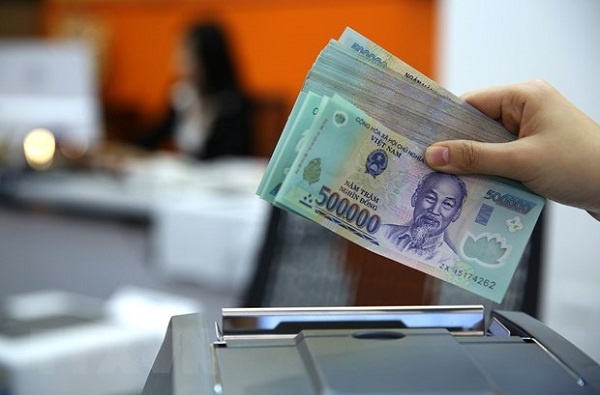Since early November, many banks have continued to increase deposit interest rates. For instance, VPBank has lifted rates by an additional 0.3 percentage points compared to October, pushing savings rates for tenors from one to five months to 4.2 per cent, per year.
Longer terms above 12 months now range from 5.3 per cent to 5.6 per cent annually, while online deposits receive an extra 0.1-0.2 percentage points, with the highest rate reaching 5.8 per cent.
BVBank has launched its ‘10 Golden Days of Interest Rates’ scheme, offering up to 6.8 per cent, per year for 12-month online deposits.
 |
The bank has also introduced online certificates of deposit with flexible tenors from six to 15 months, with a maximum interest rate of 6.3 per cent for the 15-month term.
Several other commercial banks – including Bac A Bank, SHB, HDBank, NCB and MB – have also raised rates from the outset of November.
This trend reflects stronger capital-raising needs as banks prepare lending resources for the peak year-end period, when credit demand typically rises sharply due to seasonal cycles.
According to Vietcombank Securities (VCBS), average deposit rates in October saw a slight uptick for six to 12 month tenors, mainly at joint-stock banks. Compared to the previous month, deposit rates increased by around 0.03–0.08 percentage points.
As of the end of October, credit had grown by around 13.4 per cent compared to the end of 2024, signalling strong capital demand across the economy.
VCBS forecasts that deposit rates will continue to edge higher towards the end of the year, particularly among joint-stock banks.
The firm notes that liquidity pressures in the banking system are rising as credit is expected to accelerate sharply in the final months of the year, with full-year growth projected at 18-20 per cent.
Meanwhile, USD-VND exchange-rate risks remain present as demand for foreign currency typically climbs during the year-end import peak.
VCBS expects some joint-stock banks to raise deposit rates again to meet funding requirements and manage system-wide risks, though rates should remain relatively low overall in line with the state’s policy stance of supporting economic growth.
An upward trend in deposit rates could lead to a slight increase in lending rates in the near term, as the system’s net interest margin (NIM) has narrowed significantly after an extended period of reductions following government directives.
However, the general interest-rate environment is still expected to stay low, aimed at balancing reasonable NIM levels with systemic risk control, while continuing to support the production and business sectors- particularly priority industries – in line with the policy orientations of the government and the State Bank of Vietnam (SBV).
In October, the foreign-exchange market showed signs of divergence. The central reference rate and quoted rates at joint-stock banks fell slightly by about 0.37 per cent from the previous month, trading around VND26,176 to VND26,446 per USD. This indicates continued stability in the banking system’s foreign-currency market.
By contrast, USD selling prices on the informal market rose to around VND27,800, creating a notable gap of over 5 per cent compared to bank rates.
Analysts attribute this mainly to speculative sentiment and persistently strong demand for USD hoarding among the public, especially against the backdrop of sharply rising global gold prices.
The SBV has continued to take measures to stabilise the exchange rate. VCBS’ analyst team expects no major shifts in the near term, though pressures may continue to surface in the informal market.

















































